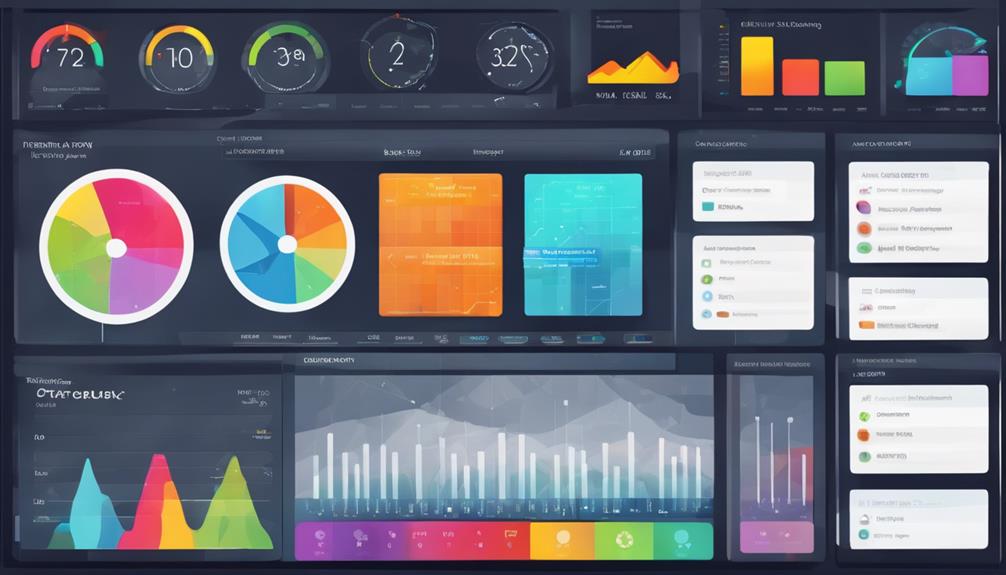You might not know that advanced A/B testing can predict future customer behavior using machine learning models. While basic A/B testing helps compare two versions of a webpage, advanced techniques allow for more nuanced insights and personalization. By segmenting audiences and analyzing multiple variables simultaneously, you can craft experiences that truly resonate with different user groups. This approach not only reduces the risk of making ineffective changes but also maximizes conversion rates. Curious about how this can transform your business strategy and enhance user engagement? There's more to uncover in this evolving field.
Understanding Advanced A/B Testing
How exactly can you elevate your conversion rate optimization (CRO) efforts using advanced A/B testing? By strategically focusing on sophisticated techniques, you can unlock deeper insights and drive substantial improvements.
Advanced A/B testing goes beyond basic comparisons, enabling you to test multiple variables and interactions with precision. This method empowers you to fine-tune user experiences, identify optimal design elements, and ultimately boost conversions.
First, ensure you have a clear hypothesis that aligns with your business goals. A data-driven approach demands a well-defined question and predicted outcome. For example, hypothesize that changing the call-to-action (CTA) button color from blue to green will increase click-through rates by 15%. Collect baseline data to establish a control group, ensuring you have a metric for comparison.
Implement robust segmentation strategies. By targeting specific audience segments, you can tailor experiments to match user behaviors and preferences. Consider demographic data, user intent, or previous interactions to create granular segments. This segmentation allows you to understand how different cohorts respond to variations, offering strategic insights into targeted optimization.
Leverage advanced statistical models to analyze results. Traditional methods might overlook the nuanced impact of minor changes. Use Bayesian statistics or machine learning algorithms to identify patterns and correlations in your data.
These tools provide a comprehensive understanding of how your variations perform across different user segments and conditions.
Multi-Variant Testing Explained

While advanced A/B testing enhances your understanding of user interactions, multi-variant testing takes optimization a step further by examining multiple changes simultaneously. Instead of testing one variable at a time, you test combinations of several variables. This helps you understand the interplay among different elements of your webpage, giving you more nuanced insights into what engages users effectively.
Consider a scenario where you're optimizing a landing page. Instead of just testing the color of a call-to-action button, you might test different headlines, images, and button colors all at once. This method allows you to pinpoint the exact combination that maximizes conversion rates, providing a strategic advantage in a competitive digital landscape.
Here's a simplified example to illustrate:
| Element | Variants |
|---|---|
| Headline | "Buy Now" vs "Shop Today" |
| Image | Product photo vs Lifestyle shot |
| Button Color | Red vs Blue |
By testing these combinations, you might discover that "Shop Today" with a lifestyle shot and a red button yields the highest conversion rate. The data-driven insights from multi-variant testing empower you to focus resources on the most effective strategies, streamlining decision-making processes.
However, strategizing for multi-variant testing demands careful planning. Ensure you have sufficient traffic to achieve statistically significant results. The complexity increases with the number of variables, so prioritize testing elements that you hypothesize will have the most impact. By leveraging multi-variant testing, you optimize not just elements in isolation but also their synergistic effects, leading to a finely-tuned, high-performing user experience.
Personalization Through Segmentation

Effective personalization through segmentation can significantly boost your conversion rates by delivering tailored experiences to distinct user groups. By analyzing user behavior and demographics, you can identify meaningful segments within your audience. This allows you to customize your content, offers, and messaging to match the unique preferences and needs of each segment, thereby enhancing user engagement and driving conversions.
To start, gather quantitative data from your website analytics, CRM, and customer feedback. Look for patterns and trends that reveal how different user groups interact with your site. Segmentation can be based on various criteria, such as demographics, browsing behavior, purchase history, or geographical location.
For instance, a user who frequently visits your pricing page but hasn't purchased may benefit from a personalized discount offer, nudging them towards conversion.
Next, implement A/B testing to evaluate the impact of your personalization strategies. Test different variations of your website or marketing campaigns on each segment to determine which approach yields the highest conversion rates. Use statistical analysis to ensure your results are significant and actionable.
Remember, personalization isn't a one-time effort. Continuously monitor your data and refine your segments as user behavior evolves.
Leveraging Machine Learning Models

With a solid foundation in personalization through segmentation, you can now enhance your conversion rate optimization efforts by leveraging machine learning models. These models allow you to process vast amounts of data efficiently and uncover patterns that aren't immediately obvious. By integrating machine learning, you can refine your A/B tests, ensuring that each variant is optimized to meet specific user behaviors and preferences.
Machine learning models provide several strategic advantages when applied to A/B testing:
- Predictive Analysis: By analyzing historical data, machine learning algorithms can predict which variations are likely to perform best, reducing the risk of choosing suboptimal strategies.
- Real-time Adaptation: These models can adjust your A/B tests dynamically, reacting to user interactions as they happen. This ensures that your tests remain relevant and effective throughout their duration.
- Enhanced Segmentation: While traditional segmentation divides users into broad categories, machine learning can identify micro-segments, allowing for even more precise targeting and tailored user experiences.
These capabilities enable you to make data-driven decisions with greater accuracy. Instead of relying solely on intuition or static historical data, machine learning models empower you to anticipate user needs and adapt your strategies proactively.
By constantly learning from new data, these models help you stay ahead in a competitive landscape, where customer expectations are always evolving.
Strategically, integrating machine learning into your A/B testing framework not only enhances decision-making but also maximizes resource efficiency. You'll effectively streamline your testing process, reduce time to insights, and ultimately drive a higher return on investment.
Interpreting Complex Test Results

In the realm of conversion rate optimization, interpreting complex test results is crucial for making informed decisions that propel your strategy forward. Advanced A/B testing generates intricate data that demands a strategic approach to extract actionable insights. You must meticulously examine statistical significance, p-values, and confidence intervals to ensure that your results aren't just a fluke. This analytical rigor helps you distinguish between genuine winners and false positives, avoiding costly missteps.
Start by assessing the test's validity. Scrutinize sample size and duration—key factors that impact test reliability. A robust sample size minimizes variance and enhances result stability, while adequate test duration captures seasonality and user behavior fluctuations.
Next, delve into segmentation. Break down results by demographics, device types, or user behavior to uncover hidden patterns. Segmented analysis reveals insights that a global average might obscure, enabling tailored optimization strategies.
Utilize data visualization tools to simplify complex datasets. Graphs and heatmaps transform raw numbers into digestible visuals, highlighting trends and anomalies that warrant further exploration.
Don't shy away from multi-variate analysis if your test includes numerous elements. This approach identifies interactions between variables, helping you fine-tune components for maximum impact.
Conclusion
Imagine a master chef who tweaks a recipe until it's perfect, ensuring every bite delights the diner. Advanced A/B testing is your kitchen, where data-driven tweaks enhance user experiences and conversions. Just like that chef, you'll use sophisticated tools—like machine learning and segmentation—to refine your strategy. The result? A seamless, personalized journey for your users, much like that unforgettable meal. Embrace this strategic approach, and watch your conversion rates rise as your audience savors their experience.


Leave a Reply